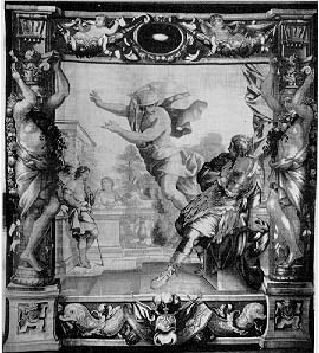 |
 |
 Mercury appears to Aeneas, Romanelli  G. Romanelli, Mercury appears to Aeneas (1635), Aen. 4, 238-278 Romanelli Romanelli, Gian Francesco, Italian painter (Viterbo 1610- 1662). Pietro da Cortona's pupil, he sometimes imitated his style (S.Thomas's charity, Rome, St. Augustine). He soon found his own style, more simple (Arione, Roma, Costaguti Collection; Presentation at the Temple, Roma, S.Maria degli Angeli). He visited France twice : in 1646-1648 and then in 1655: during his second stay, he devoted himself to composing big decorative works (Roman and Jew Histories, Paris, Louvre, Anna of Austriaís room; mythological subjects, Paris, Mazzarino's palace, now National Library). Very popular is his production for tapestries, in Rome for Barberini (Plays of Puttos, Villa Lante; Mysteries Christís life and death, Barberini Palace) and in France. Mercury appears to Aeneas
This picture is in clear baroque style, as we can see from the richly decorated frames, which give importance to the whole scene. The action takes place in the middle of the picture, where Mercury appears to Aeneas. Their perspective and depth have also great importance. |








